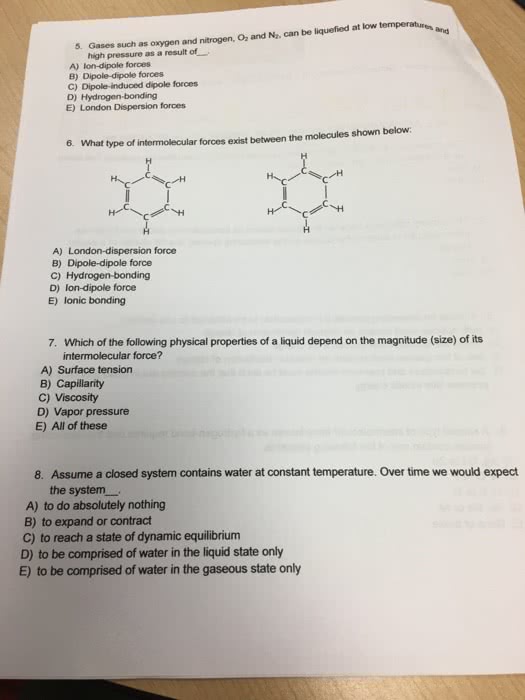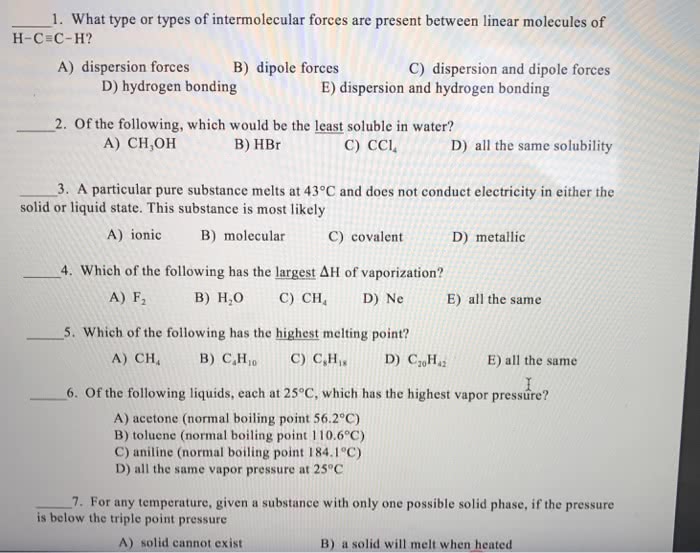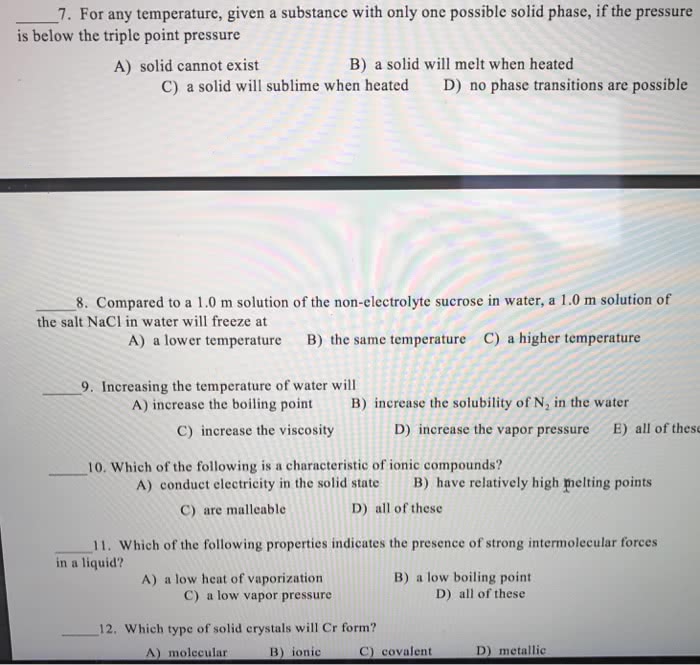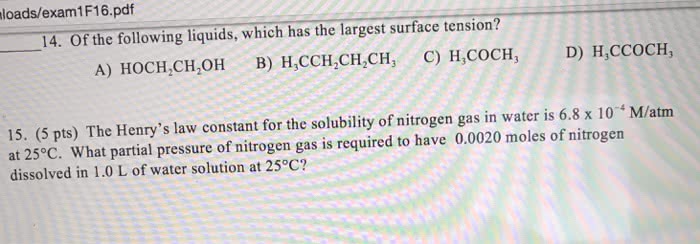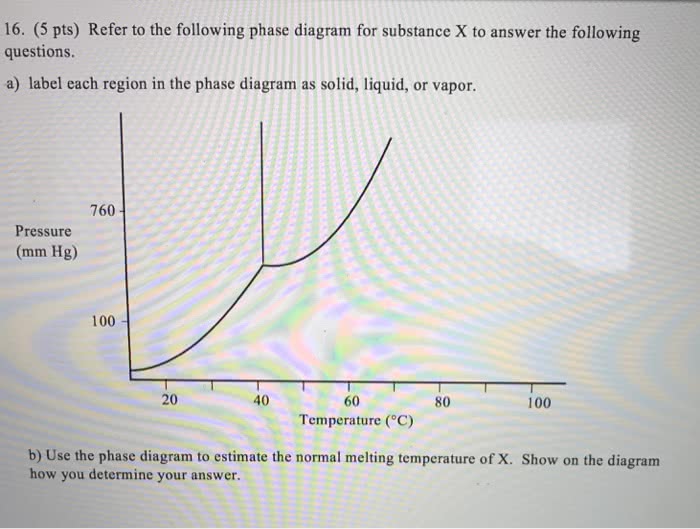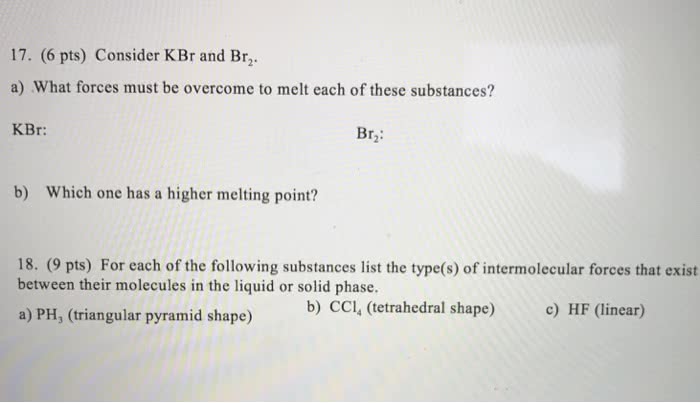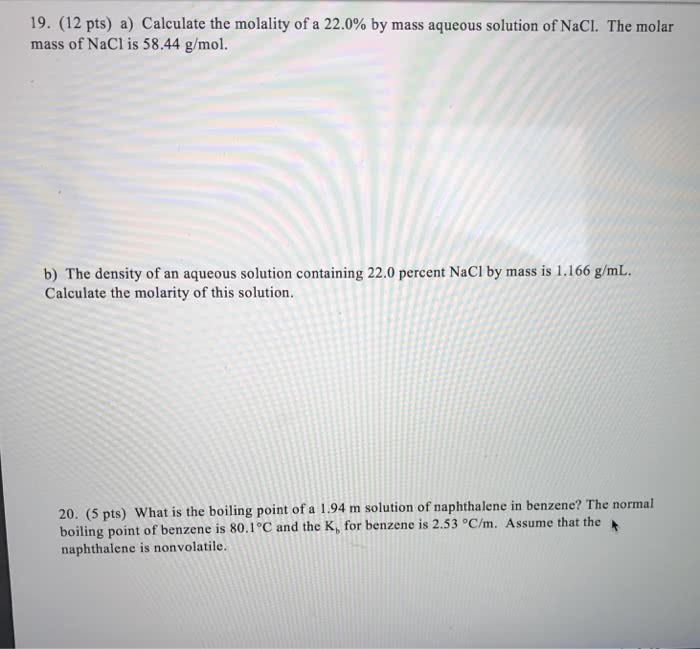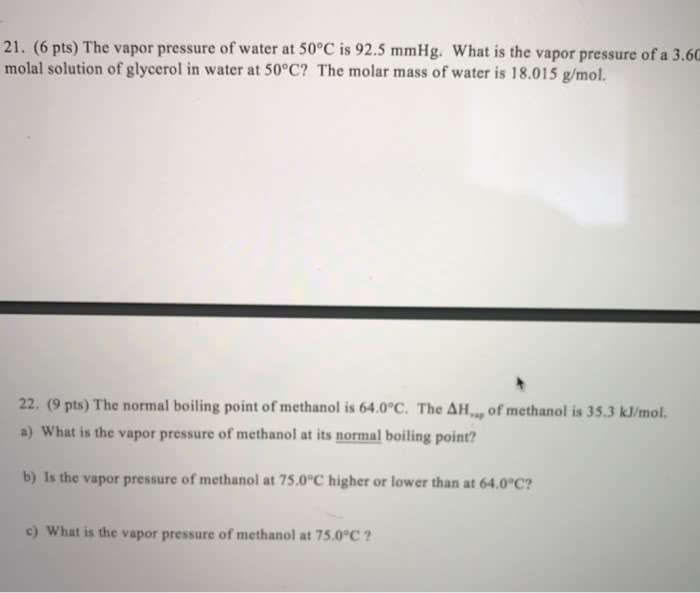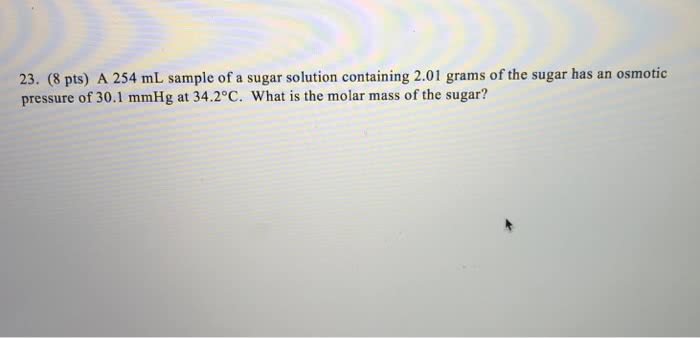Phase changes always associate with change of enthalpy. For the following situations, name the phase transition and indicate whether the process is exothermic or endothermic.
. Dry ice (solid carbon dioxide) turns to gaseous carbon dioxide. Answer:
. Water vapor turns to liquid water. Answer:
. Solid iron turns to liquid iron. Answer:
. Iodine vapor turns to solid iodine. Answer:
. Liquid helium turns to helium gas. Answer:
True or false
. Intermolecular forces are stronger than ionic and covalent bonds. Answer:
. For molecules with similar size and molar mass, those with higher polarity would have higher boiling point. Answer:
. Ion-dipole forces exist between ionic potassium bromide and polar water. Answer:
. Dispersion forces exist between argon and helium. Answer:
. Instantaneous dipoles exist in all molecules and atoms. Answer:
. The strength of dispersion forces depends on the molar mass but the shape of the molecules have no effect on dispersion forces. Answer:
. Ice has a higher density than water because ice has an ordered cagelike structure. Answer:
. Liquids with weaker intermolecular interactions have lower viscosity. Answer:
. Viscosity decreases with increasing temperature. Answer:
. For any molecules, the heat of vaporization is always lower than the heat of fusion because it takes more energy to make molecules to move past one another in a solid lattice. Answer:
Phase changes always associate with change of enthalpy. For the following situations, name the phase transition and indicate whether the process is exothermic or endothermic.
. Dry ice (solid carbon dioxide) turns to gaseous carbon dioxide. Answer:
. Water vapor turns to liquid water. Answer:
. Solid iron turns to liquid iron. Answer:
. Iodine vapor turns to solid iodine. Answer:
. Liquid helium turns to helium gas. Answer:
True or false
. Intermolecular forces are stronger than ionic and covalent bonds. Answer:
. For molecules with similar size and molar mass, those with higher polarity would have higher boiling point. Answer:
. Ion-dipole forces exist between ionic potassium bromide and polar water. Answer:
. Dispersion forces exist between argon and helium. Answer:
. Instantaneous dipoles exist in all molecules and atoms. Answer:
. The strength of dispersion forces depends on the molar mass but the shape of the molecules have no effect on dispersion forces. Answer:
. Ice has a higher density than water because ice has an ordered cagelike structure. Answer:
. Liquids with weaker intermolecular interactions have lower viscosity. Answer:
. Viscosity decreases with increasing temperature. Answer:
. For any molecules, the heat of vaporization is always lower than the heat of fusion because it takes more energy to make molecules to move past one another in a solid lattice. Answer:

